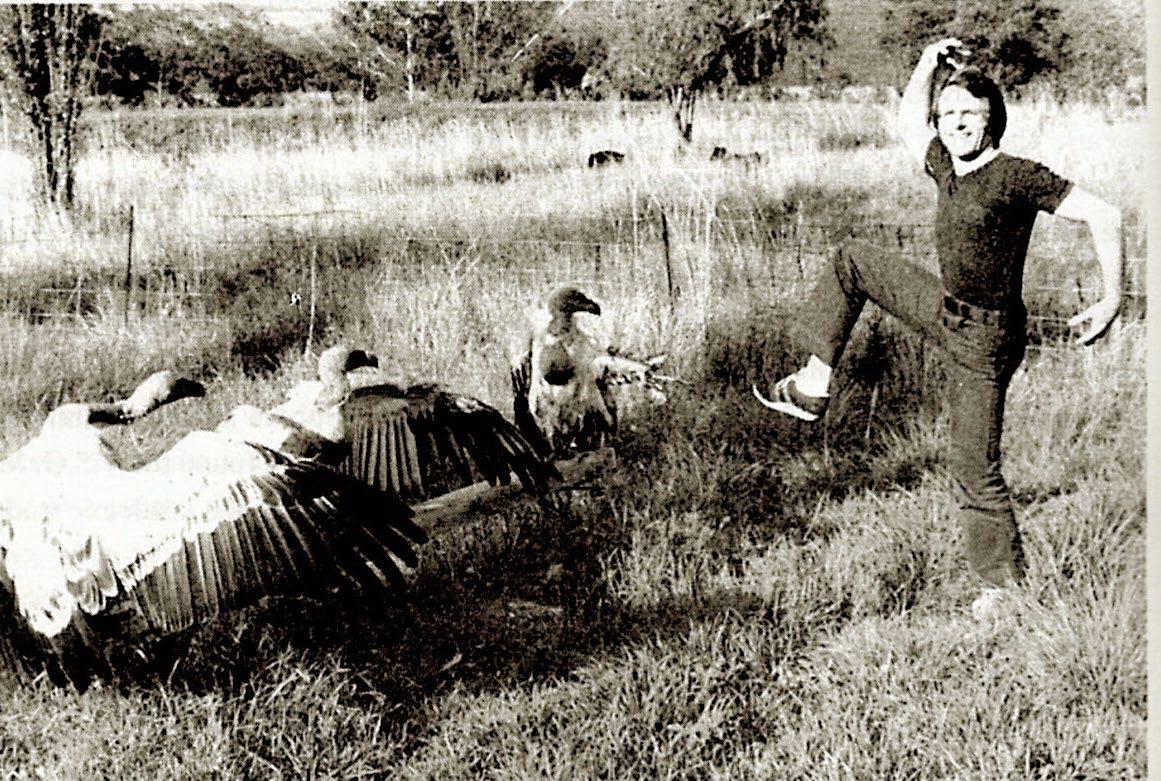
As a child in war-ravaged London, Peter would scramble across the rubble, scavenging anything of interest and imagining himself as a great vulture soaring over the African plains. This childhood fantasy led him to Africa in the early 1970s and within two decades he had established himself as the leading authority on African vultures with the publication of The Vultures of Africa. A group of American bibliographers wrote: ‘It will be on the shortlist of great books on birds of prey.’
Born in 1941 in Somerset, where his mother had been evacuated from London’s badly bombed East End, Peter grew up in Romford, Essex. There he acquired the broad Cockney accent that never left him and amplified his incisive sense of humour. He attended the Royal Liberty Grammar School, excelling in science subjects and participating in the British Schools Exploring Society’s six-week expedition to Iceland in 1960. After leaving school and working as a grave digger for a brief period, he took up a place at Worcester College, University of Oxford.
Peter was there to read zoology, but opted instead to read the complete works of Dostoevsky and to learn to play the baritone saxophone. Inevitably, he was rusticated and he spent the next few years playing saxophone with various R‘n’B bands, ending up with Screaming Lord Sutch. His last gig with Sutch (known for his horror-themed stage show and later for founding the Official Monster Raving Loony Party) was in France in 1966. The band had expected No.1 billing, but found themselves No.2, the top spot going to a couple of folk singers from the US: Simon and Garfunkel.
This story is from the {{IssueName}} edition of {{MagazineName}}.
Start your 7-day Magzter GOLD free trial to access thousands of curated premium stories, and 9,000+ magazines and newspapers.
Already a subscriber ? Sign In
This story is from the {{IssueName}} edition of {{MagazineName}}.
Start your 7-day Magzter GOLD free trial to access thousands of curated premium stories, and 9,000+ magazines and newspapers.
Already a subscriber? Sign In

EXPLORING NEW HORIZONS
Keith Barnes, co-author of the new Field Guide to Birds of Greater Southern Africa, chats about the long-neglected birding regions just north of the Kunene and Zambezi, getting back to watching birds and the vulture that changed his life.

footloose IN FYNBOS
The Walker Bay Diversity Trail is a leisurely hike with a multitude of flowers, feathers and flavours along the way.

Living forwards
How photographing birds helps me face adversity

CAPE crusade
The Cape Bird Club/City of Cape Town Birding Big Year Challenge

water & WINGS
WATER IS LIFE. As wildlife photographer Greg du Toit knows better than most.

winter wanderer
as summer becomes a memory in the south, the skies are a little quieter as the migrants have returned to the warming north. But one bird endemic to the southern African region takes its own little winter journey.

when perfect isn't enough
Egg signatures and forgeries in the cuckoo-drongo arms race

Southern SIGHTINGS
The late summer period naturally started quietening down after the midsummer excitement, but there were still some classy rarities on offer for birders all over the subregion. As always, none of the records included here have been adjudicated by any of the subregion's Rarities Committees.

flood impact on wetland birds
One of the features of a warming planet is increasingly erratic rainfall; years of drought followed by devastating floods. Fortunately, many waterbirds are pre-adapted to cope with such extremes, especially in southern Africa where they have evolved to exploit episodic rainfall events in semi-arid and arid regions. But how do waterbirds respond to floods in areas where rainfall - and access to water - is more predictable? Peter Ryan explores the consequences of recent floods on the birds of the Western Cape's Olifants River valley.

a star is born
It’s every producer’s dream to plan a wildlife television series and pick the right characters before filming.